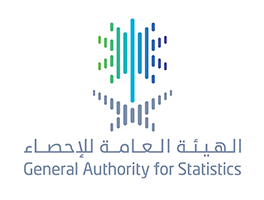
الهيئة العامة للإحصاء: انخفاض المؤشر الشهري للرقم القياسي لأسعار المستهلك خلال شهر أكتوبر 2018م وارتفاع المؤشر السنوي.
GASTAT: Consumer Price Index (CPI) Decreases and Annual Index Rises in October,2018
General Authority for Statistics GASTAT released its monthly report of CPI in Saudi Arabia for October. The report was published on its official website www.stats.gov.sa . The Consumer Price Index CPI decreased 0.3% in October compared to the previous month (September 2018).
GASTAT report showed that the Consumer Price Index CPI in Saudi Arabia decreased to (106.8) Index Points in October from (107.1) in September of 2018 with 0.3% change.
On the other hand, the report attributed the monthly decline of the index to the declines of the eight sections composing it, which are: housing, water, electricity and gas section with 0.8% , home furnishing and equipment section with 0.4%, clothing and shoes section with 0.3%, transportation section with 0.3%, personal goods and services section with 0.2%, health section with 0.1%, culture and entertainment section with 0.1%, and finally restaurants and hotels sections with 0.1%.
In contrast, two of the main sections witnessed an increase, which are: food and beverages section with 0.2% and tobacco section with 0.1%. Telecommunication and education sections remained stable with no change.
The year-over-year (YOY) of CPI registered an increase of 2.4% in October 2018 compared to the same month last year reaching (106.8) in October 2018 compared to (104.3) in October 2017.
The ten sections composing the CPI contributed to year-over-year increase, which are: transportation section 11.5%, tobacco 10.2%, restaurants and hotels 8.7%, food and beverages 7.3%, health 4.0%, culture and entertainment 3.2%, home furnishing and equipment 2.8%, telecommunication 1.4%, education 0.2%, personal goods and services 0.1%.
On the other hand, two of the main sections witnessed a decline, which are: clothing and shoes section with 5.0% as well as housing, water, electricity and gas section with 3.6%.
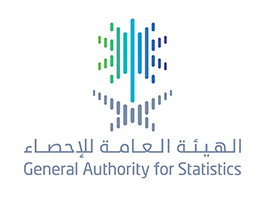
"الإحصاء" تُصدر نتائج مسح التجارة الداخلية للربع الثاني من عام 2018م
Number of Saudi Females Workers Increased in Internal Trade Activity
GASTAT Releases Internal Trade Survey Results Q2- 2018
The General Authority for Statistics (GASTAT) released on its official website www.stats.gov.sa the results of the "Internal Trade Survey for the Second Quarter of 2018". The survey is defined as a set of economic statistics and data that can be used for short-term to measure the performance of the trade sector in order to assess its growth, and identify its strengths or weaknesses.
Moreover, it is an important economic activity that contributes to expand employment and raise GDP, exactly like the retail activity. This activity connects producers with consumers, and focusses on the features and components of establishments engaged in the activities of vehicles sale and repair as well as wholesale and retail sale trade.
The survey showed that the number of Saudi females workers of the internal trade activity establishments increased by 2%, compared to the previous quarter. The workers’ number of internal trade sector in Saudi Arabia reached about one million six hundred eighty-five thousand workers by the end of the second quarter of 2018, including almost one million two hundred fifty thousand non-Saudi workers. However, the number of Saudi workers of the same sector was approximately four hundred thirty-four thousand workers.
The employees of the retail trade made up (1,054,460) one million, fifty-four thousand, four hundred sixty workers, including (771,650) seven hundred seventy-one thousand, six hundred fifty non-Saudi workers. However, the number of Saudi employees in this activity was (282,810) two hundred eighty-two thousand, eight hundred ten workers, the survey showed.
The results of the survey also indicated that the total operating revenues(sales) of the internal trade sector during the second quarter of the current year 2018 amounted to around (148,987 million) one hundred forty-eight thousand, nine hundred eighty-seven million riyals. Nonetheless, the total operating expenses of the sector during the same period recorded about (89,312 million) eighty-nine thousand, three hundred twelve million riyals. Therefore, the operating surplus of the three sector activities during the first quarter of 2018 was about (48,052 million) forty-eight thousand, fifty-two million riyals.
Based on the data of the survey, the operating surplus of the wholesale trade was the highest among all the activities of the internal trade, where its number was about (18,928 million) eighteen thousand, nine hundred twenty-eight million riyals during the second quarter of the current year 2018. On the other hand, the operating surplus of the retail trade activity reached around (15,72million) one thousand, five hundred seventy-two million riyals. Finally, the operating surplus of the sale and repair of motor vehicles and motorcycles activity accounted to almost (13,401 million) thirteen thousand, four hundred one million riyals.
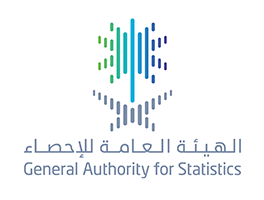
" الإحصاء ": متوسط الأجر الشهري للمشتغلين السعوديين في أربعة قطاعات : 10.238 ريال
Included the whole salary “basic, allowances, bonuses, overtimes, and other compensations”
GASTAT: Saudi Workers Monthly Average Wage in Four Sectors: 10.238 SAR
The General Authority for Statistics (GASTAT) spokesman, Taiseer Almofarrej said that according to the labor market bulletin of the second quarter, 2018, the average monthly wage of Saudi workers who get paid for their work in four sectors; public sector, private sector, non-profit organizations, international and regional agencies, and other sectors reached (10.238) SAR. Regarding the calculation method of this average, Almofarrej stated that it was measured based on estimating the average wages of all Saudis (males and females) in the above mentioned four sectors either inside Saudi Arabia or outside it, in addition to the wages of workers in other sectors which were taken from the field survey that GASTAT conducts quarterly by asking households about their monthly wages.
Almofarrej indicated that the wages about which households are asked differ from the wages registered in the administrative records of the different sectors, where the head of the household disclose the monthly wage for any work which may not include a job salary or any related allowances or bonuses. However, Almofarrej said that the average wages of Saudis (males and females) who work in these sectors registered (11.198 SAR) in the public sector, (7.339 SAR) in the private sector, (4.750 SAR) at non- profit organizations, and (16.257 SAR) in the other international and regional agencies and sectors.
As for the difference between the statistics issued by GASTAT and the ones issued by other entities such as GOSI, Almofarrej illustrated that the statistics issued by GOSI represent the basic salary average registered by the employer. They do not include any additions such as allowances, compensations, or bonuses. Therefore, it is normal to have an average that is less than the average derived from the answers of households’ heads in the field survey based on which GASTAT issue its statistics.
Regarding the reasons why the Bulletin of the labor market revealed statistics that were not shown in previous years, Taiseer Almofarrej confirmed that what was issued earlier is the results of the Labor Force Survey, this is the results of the fieldwork that GASTAT conducts every quarter. Since the results of the fourth quarter of 2016, GASTAT has begun to issue a more comprehensive release under the name "Bulletin of the labor market." What distinguishes the bulletin is that it is an integrated work between government institutions (the General Authority for Statistics, the Ministry of Labor and Social Development, the Ministry of Civil Service, in addition to the National Information Center (NIC), the results of the field survey and the registered data provide a panoramic and comprehensive picture of the labor market. As a result of this statistical integration, the Bulletin contains a large number of detailed data on employees according to the rules and regulations to which they are subject, Gender, age, administrative region, and educational level. It also includes data of jobseekers, average monthly wages, working hours, and domestic workers. The aim is to support policy and decision makers.
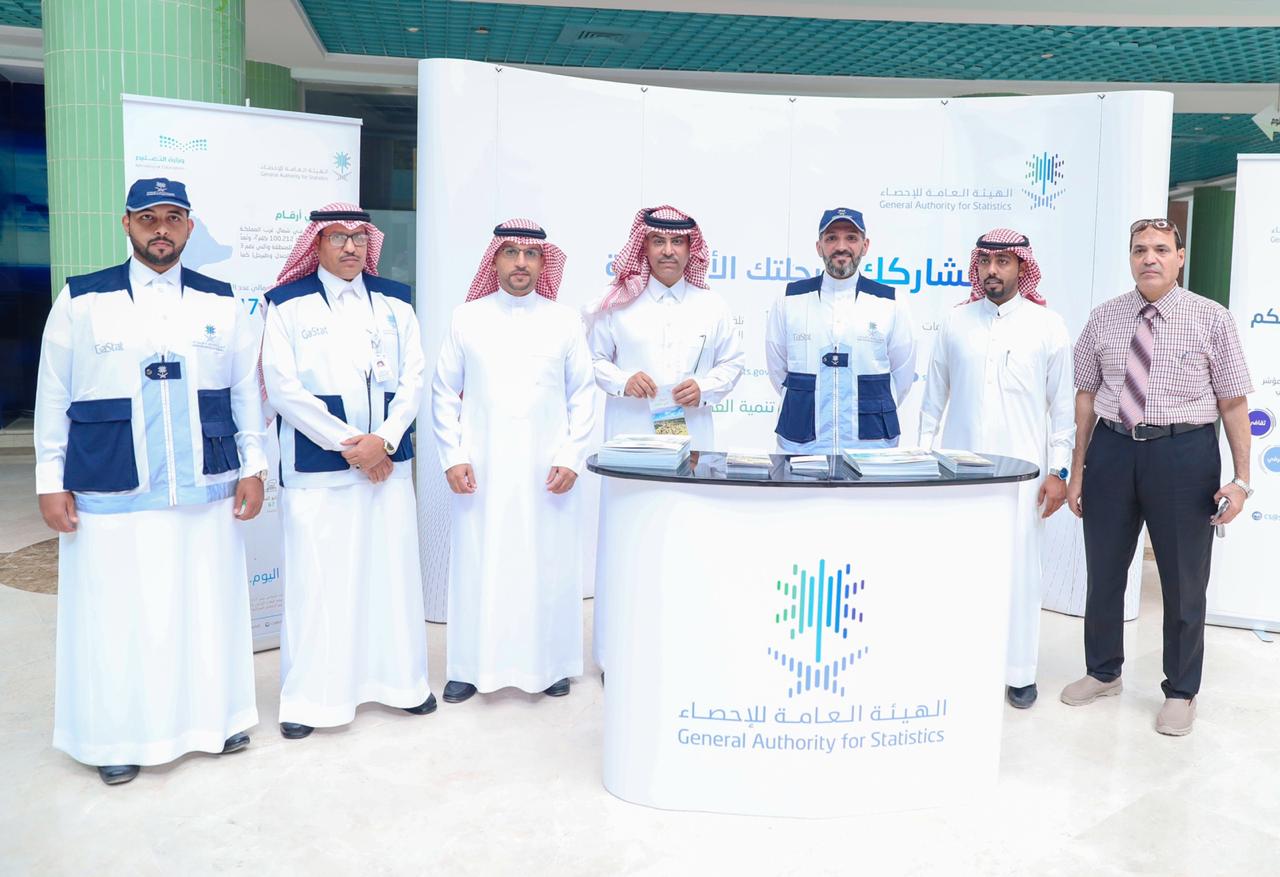
الهيئة العامة للإحصاء تطلق أسبوعها التوعوي لطلبة التعليم العام والعالي بمنطقة الجوف
GASTAT Launches its Awareness Week for Students of General and Higher Education in Al-Jouf Region
As part of its plan to raise statistical awareness among all segments of the society, including the students of general education and higher education, the General Authority for Statistics (GASTAT) organized the "Smart Statistician" exhibition in cooperation with the General Directorate of Education in Al-Jouf Region. The exhibition will be held at Al-Sudairiya School in Sakaka city, during the period from 20th to 24th of Muharram 1440 AH, where more than 70 schools from the region were invited to visit and participate.
The exhibition, which is intended for students in the upper grades of the primary and intermediate levels, aims to highlight the importance of statistics in the life of the student, introduce the most important concepts related to statistics, help students in reaching a high level of awareness of the importance of statistics, as well as the steps and stages of the statistical process in a scientific and exciting way. In addition, it enhances the students' understanding of the role of statistical systems, the statistical field researchers and the impact of the accuracy of data provided by (households and establishments) on development in all its fields, considering that the student is an influential media in the family as he transfers everything that he learns in school to his family.
The exhibition starts its activities with an introductory video. The student will begin to move among the sections that contain scientific information presented in a fun and entertaining way by learning about statistics, the difference between statistics and mathematics, the role of the General Authority for Statistics, how to carry out field statistical research through a practical experiment conducted by the student by playing the role of a "statistical researcher" and visiting a household using the electronic form of field research, to simulate the reality of statistical researcher.
The exhibition, which opens from 9 am to 1 pm during the week, includes a number of shows and competitions, such as the competition of regions and numbers, which aims to identify the population of the regions, the statistical signs competition, which aims to enhance the student's understanding of its importance in the census and statistical surveys in general.
On Wednesday, Muharram 23rd, 1440 AH, GASTAT will also present a lecture on the importance of statistics hosted by Dumat Al-Jandal Intermediate School in the presence of a number of students from the governorate schools. On the other hand, in the same period, Al-Jouf university will hold the event of (We are with you in your academic trip). In this event, an awareness booth will be set up to introduce all university students, faculty members and employees at the university with GASTAT products, statistical services and how to obtain them and benefit from them in research and academic studies. The event will conclude with an awareness lecture to be held at the University Theater on Thursday, 24th of Muharram, during which the students will be introduced with the role of the college student in the development as well as their role in spreading of awareness among the society.
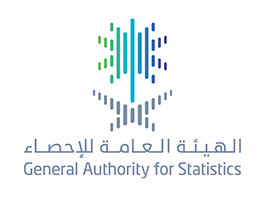
الهيئة العامة للإحصاء: ارتفاع الرقم القياسي العام للإنتاج الصناعي للربع الثاني 2018م
GASTAT: Index of Industrial Production Increased during the Second Quarter of 2018
On its official website www.stats.gov.sa , GASTAT released the results of the industrial production survey for the second quarter of 2018. This survey measures the relative change or any developments in the quantities of commodities and material production.
The survey results indicated an increase by 4.17% in the industrial production index during the second quarter of 2018, compared to the first quarter of the same year. The index registered 137.87 points during the second quarter, 2018.
As for the industrial production index activities, the mining and quarrying indicator rose by 1.89%, whereas the manufacturing production increased by 5.07%. However, the production of the electricity and gas supply registered an increase with 83.46% when compared to the first quarter of 2018.
The results also showed an increase by 5.84% in all industrial activities compared to the second quarter of 2017. The growth in mining and quarrying production reached 1.95%, while the manufacturing production growth registered 16.44%. However, the production of electricity and gas supply decreased by 0.30%.
In this context, industrial production means transforming raw material (inputs) into consuming material in its final shape as (outputs) so that the producing establishment may gain a profit in return. On the other hand, the extractive industries mean raw material extracted from the ground. They depend on non-renewable natural resources such as oil and mining. However, manufacturing concerns all industries whose activity is all about transforming raw material into final products or intermediate products.
It is worth mentioning that the idea of index means the measurement of any change in a given value during a specific period of time called the comparison period which compares the values during different periods of times. The Industrial Production Index is considered the fourth statistical product that GASTAT conducts as an index. It is conducted after Consumer Price Index, Wholesale Prices Index, and Real-estate Prices Index.
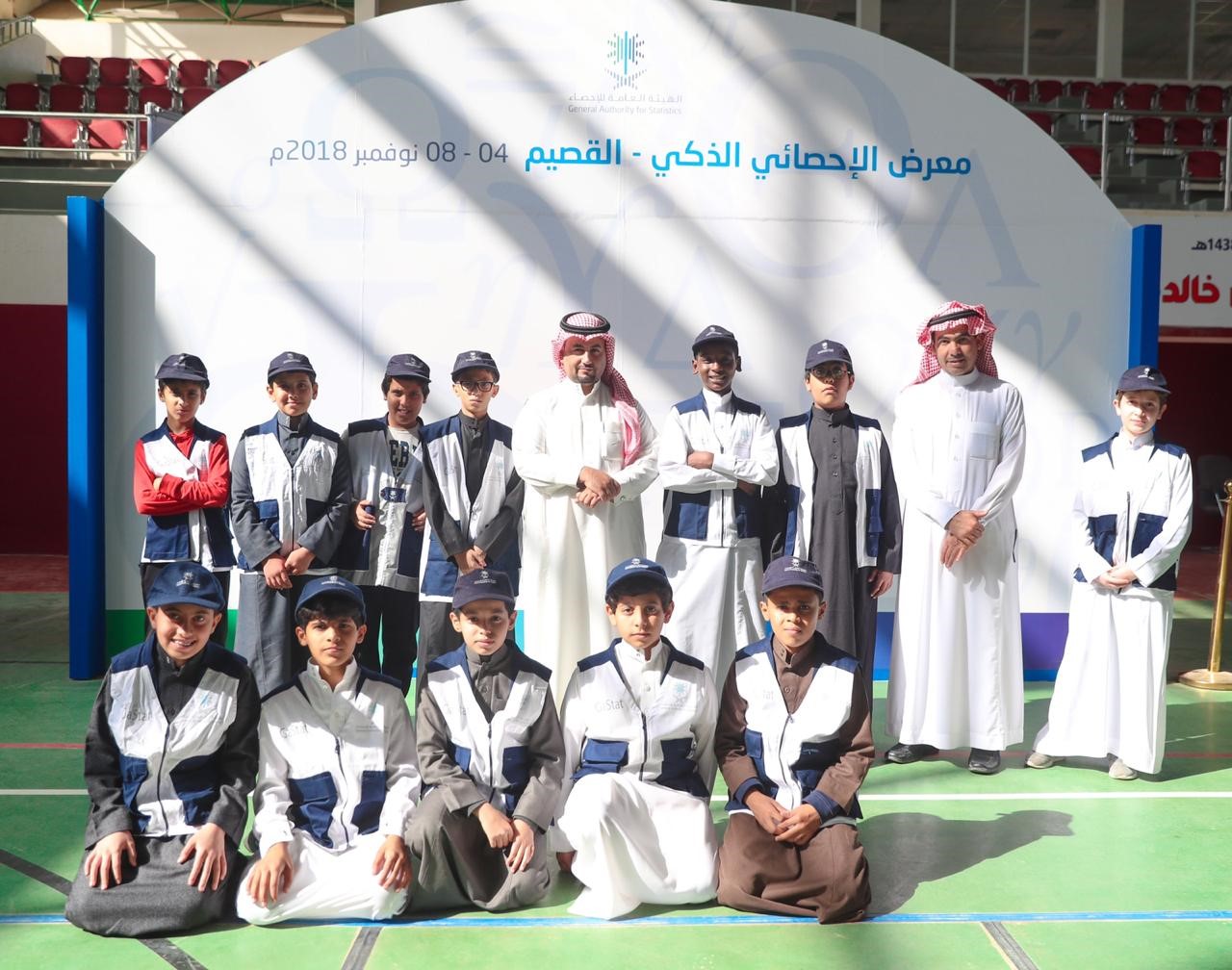
طلاب وطالبات القصيم يشاركون في معرض الإحصائي الذكي
Within GASTAT’s plan to raise statistical awareness among all society classes
Qassim's Students Participate in Smart Statistician Exhibition
The General Authority for Statistics (GASTAT), in cooperation with the General Directorate of Education in Qassim, organized the “Smart Statistician Exhibition” as a part of its plan to raise statistical awareness among all society classes, including the students of general and higher education. The exhibition was held at the student’s house in Buraydah Region during the period 26-29 Safar, 1440H with participation of more than 30 schools in the region to visit and participate.
The exhibition targeted the students in the higher classes of primary and intermediate school. It aims at clarifying the role of statistics in the life of students, in addition to explaining the statistical concepts, and raising the level of students’ awareness. Moreover, it presents the statistical process steps and stages in a simple and scientific way, and enhances the student’s realization of the statistician role. However, the exhibition demonstrates the impact of data accuracy provided by (establishments and households) on development, as the student is considered an effective method in raising households’ awareness.
In the beginning of the exhibition, the students were asked to view an introductory video featuring statistics in general, then they visited the sections of the exhibition which contain significant information presented in an entertainment way. The sections include information on the difference between statistics and mathematics, GASTAT’s role, and the role played by the student and household in the Authority’s work. Additionally, the students learned the procedures of conducting filed statistical research through a practical experiment, where the student embodied the role of the “statistician”, and visited a household using an electronic form of field research in order to simulate the reality of being statistician.
The exhibition opens from 9:00 am to 1:00 pm during weekdays. It involves a number of competitions, such as “Regions and Numbers Challenge”, to know the number of the region’s population, and the competition of “Statistical Signs” to boost the student's understanding of the importance of such signs in conducting census and statistical surveys.
GASTAT also gave an awareness lecture on the importance of statistics hosted by the Department of Education in Unayzah Region in the presence of many students of governorate’s schools. However, during this week, Qassim University hosted the event of (We Share You Your Academic Journey) which targets university students, faculty members, and all university staff. This event presents the statistical products and services of the Authority, and explains how to use them to conduct academic studies and research.
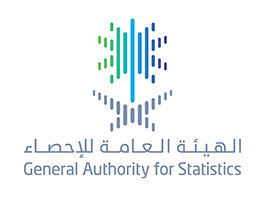
الهيئة العامة للإحصاء: ارتفاع عدد المشتغلين السعوديين في منشآت القطاع الخاص بنسبة 5.7%
GASTAT: Number of Saudi Workers Working at Private Establishments Rose to 5.7%
On Wednesday 29/2/1440 H corresponding to 7/11/2018 , GASTAT released the results of the “Economic Indicators Survey (Q2, 2018)” on its official website www.stats.gov.sa . The results provide short-term indicators about the number of workers by gender and nationality as well as the paid compensations, operating expenses and operating revenues as a periodical study that focuses on the features and the components of the working institutions practicing one economic activity or several economic activities in public and private sectors.
The results of the survey showed that the total number of workers working at private establishments increased by 3.6% compared to the same quarter of 2017. It also showed an increase of 5.7% in the total number of Saudi workers working at private establishments compared to the same quarter of 2017.
In addition, the total paid compensations of workers working at private establishments rose to 8.9% compared to the same quarter of 2017, results showed.
According to the survey’s results, the total operating expenses of private establishments increased by 10.2% compared to the same quarter of 2017. The total operating revenues of private establishments also increased by 9.9% compared to the same quarter of 2017.
Economic indicators are a set of economic statistics and data which can be used as a short-term plan to measure the performance of the various economic sectors in order to evaluate the economic situation and to identify the strengths and weaknesses of economy.
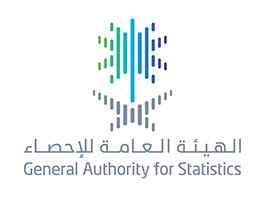
الإحصاء: ارتفاع في نصيب الفرد من الناتج المحلي الإجمالي والحساب الجاري لميزان المدفوعات ومؤشر الادخار الإجمالي للربع الثاني لعام 2018م
Three Economic Indicators Suggest an Economic Growth
GASTAT: Per Capita GDP, Current Account of the Balance of Payments and Total Savings of the 2nd Quarter of 2018 Increased
On its official website www.statts.gov.sa , GASTAT published three economic indicators which are: GDP per capita for the 2nd quarter (2018), the surplus or deficit in the current account of the balance of payments for the 2nd quarter (2018), and the total savings index for the second quarter of 2018.
Furthermore, per capita share at current prices reached (21.997) riyals with an increase of (14.91%) compared to the 2nd quarter of 2017. On the other hand, GDP per capita reached (22.272) riyals for the 2nd quarter of 2018 with an increase of (14.20%) compared to the same quarter of the previous year.
The above-mentioned indicator reflects the individual’s ability to obtain consuming goods and services, shows the average income per capita in Saudi Arabia on a quarterly basis, also it can be used to measure the economic development around the world and to compare between countries as well, GASTAT clarified.
In regard to surplus and deficit in current account for the 2nd quarter of 2018, the current account indicator of the balance of payment achieved a surplus amounted to (9.82%) to GDP during the 2nd quarter of 2018; and the deficit was (3.24%) in the current account of the balance of payments in the 2nd quarter (2018).
GASTAT also published the total savings indicator for the second quarter of 2018 where it reached 242 billion and 497 million riyals with an increase of (29.13%) compared to the same period last year 187 billion and 793 million riyals. The total savings rate to GDP edged up to (33.09%) in the 2nd quarter of 2018 compared to (30.18%) in the same period of the previous year.
